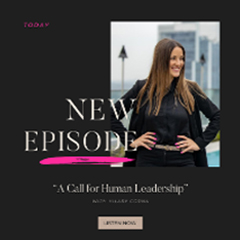AI is reshaping how businesses operate, but for many leaders, the impact still feels underwhelming. The question is no longer “Should we use AI?” — it’s “Why isn’t it making things easier?”
Here’s the truth: it’s not the AI tools that fall short. It’s where teams start.
That’s exactly why I created this new guide:
Top 10 Recommended First AI Projects for Non-Technical Companies — a step-by-step playbook you can implement without any technical skills.
These projects eliminate operational drag, give your team quick wins, and build the foundation needed for more advanced AI down the road.
This week’s blog breaks down why choosing the right first AI projects matters more than the tools themselves — and why simplicity, clarity, and process always come first.
Why Most AI Efforts Fail and What to Do Instead
Everyone wants AI right now. And for good reason: the companies that learn to use it early will move faster than the ones still debating it. But here’s the part no one warns you about:
AI doesn’t fix operational chaos — it magnifies it.
This is why so many teams feel disappointed after adopting AI tools. They expected transformation. What they got was…faster formatting, more dashboards, and the same old bottlenecks.
The issue isn’t the technology.
It’s the approach.
It’s the approach.
Most companies jump into AI by chasing what’s flashy instead of what’s foundational — automating tasks that were never clear, never standardized, and never examined in the first place.
This guide walks you through the first AI projects that actually move the needle — the ones that clean up the noise, reduce manual work, and help your team feel the impact quickly without technical skills or expensive software.
These are the projects that build capability, not complexity.
The Real Reason AI Falls Flat: Operational Drag
Every business has a silent operational “drag” — the friction you don’t see because everyone’s too busy working around it:
- Rewriting the same messages
- Copy-pasting data between tools
- Delays from unclear handoffs
- Tasks that depend on tribal knowledge
- Reports delivered too late to matter
AI can dramatically reduce this drag…but only if you start in the right place.
When teams jump to automating broken workflows, they don’t just preserve the dysfunction — they accelerate it. That’s the trap.
The right first AI projects do the opposite:
They simplify your operation so you can use AI intentionally, not reactively.
They simplify your operation so you can use AI intentionally, not reactively.
The Simpler the Project, the Faster the ROI
One of the biggest misconceptions leaders have is believing their first AI project should be ambitious.
Big automations. Multi-step workflows. Full-scale system overhauls.
In reality?
Your most impactful projects are the boring ones.
Your most impactful projects are the boring ones.
The guide highlights the top 10 AI projects that work every time for non-technical teams—projects like:
- Standardizing customer communication
- Creating internal knowledge libraries
- Drafting documentation automatically
- Using AI to streamline scheduling, planning, or summarization
These aren’t glamorous.
But they eliminate hundreds of hours of manual work, clean up inconsistencies, and give teams early wins that build confidence and momentum.
Small, simple, and scalable beats big and brittle every time.
Process First, AI Second — Always
AI is powerful, but it still depends on human-led clarity.
Before you ask, “What can we automate?” ask:
Is the process clear?
Is the handoff consistent?
Is the workflow documented?
Does everyone follow the same steps?
If the answer is no, the first step isn’t automation — it’s alignment.
This is why the guide prioritizes AI projects that create structure, reduce guesswork, and shine a light on how work is actually done.
AI works best when it supports a clear process, not replaces it.
A Practical Path Forward
If you want meaningful AI impact, skip the hype. Start with these three moves:
1. Identify the drag, not the drama
Look for places where people repeat work, patch gaps, or reinvent steps every week.
Those are your highest-leverage AI entry points.
Those are your highest-leverage AI entry points.
2. Choose simple AI wins first
Simple = sustainable.
Simple = fast adoption.
Simple = visible results.
Simple = fast adoption.
Simple = visible results.
The top 10 projects in the guide are built exactly for this.
3. Create a continuous improvement loop
AI isn’t a one-time deployment.
It’s a capability you build.
It’s a capability you build.
When teams see small improvements working, they bring more ideas — and that’s how momentum begins. Download the guide here.
Download the guide here.
 Download the guide here.
Download the guide here.AI doesn’t transform chaotic operations.
It transforms clear ones.
It transforms clear ones.
Want to Work With Us?
If you’re ready to scale with clarity instead of complexity, join us inside The Ops Edge Academy—our PDCA certification program for operations leaders who want to build systems that support sustainable growth.
Inside, you’ll learn how to:
- Remove inefficiencies that quietly drain margin
- Build processes that are simple, repeatable, and ready to scale
- Equip your team to continuously improve as you grow
Only 3 spots left.
 Claim your spot before enrollment closes. Enroll in The Ops Edge Academy →
Claim your spot before enrollment closes. Enroll in The Ops Edge Academy →In your service,
Hilary Corna













